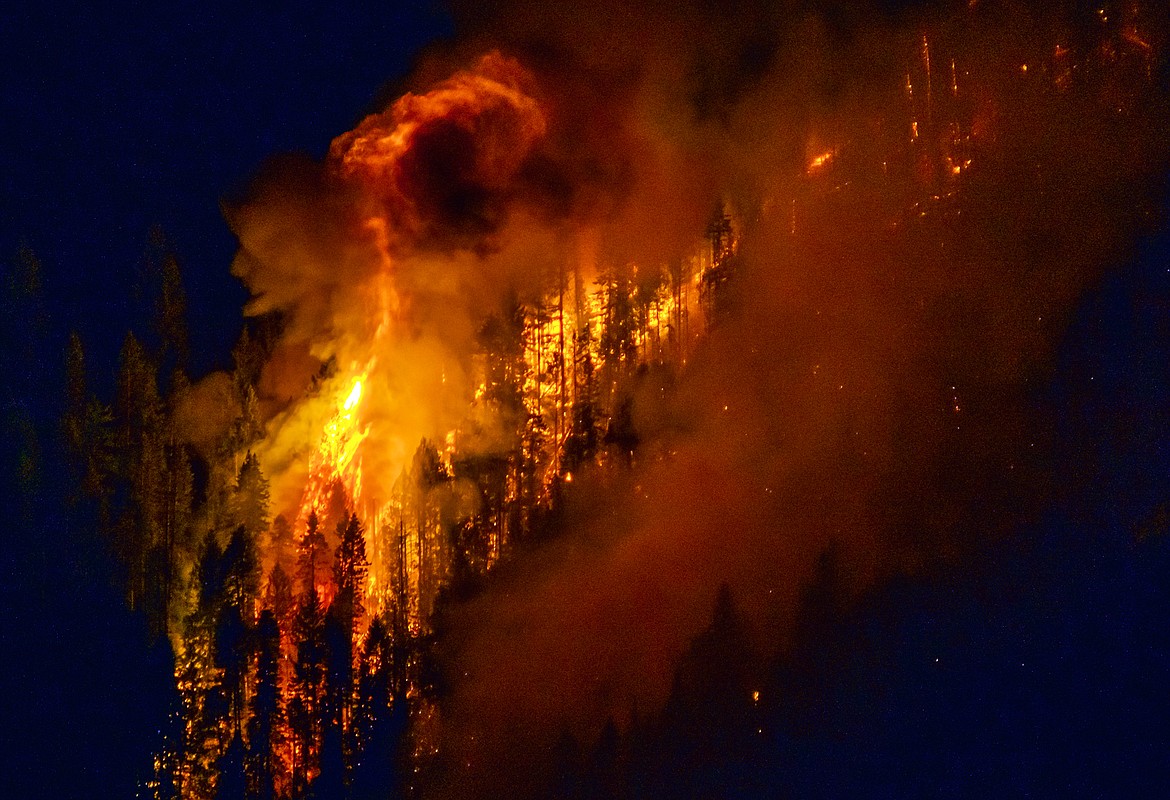Officials urge public to take every precaution this weekend
Josh Harvey usually buys plenty of fireworks to ignite on the Fourth of July.
Not now.
“This year is different,” said the fire management chief for the Idaho Department of Lands.
Extreme heat and an extensive drought have raised the potential for fires, in both rural and urban settings, not only in Idaho, but throughout much of the United States. More than 90% of the West is considered to be in a drought, which represents "the most expansive and intense drought for the West this century," according to the U.S. Drought Monitor.
Harvey said he will not be setting off fireworks this year and urged others to do likewise. Instead, he said they should consider attending an organized Fourth of July fireworks display.
“Fireworks can very easily go awry,” Harvey said.
Federal and state land management agencies in Idaho held a press conference Thursday and called on the public to be vigilant this weekend to avoid touching off any blazes “in the face of extreme statewide conditions” outlined in a new outlook released by the National Interagency Fire Center.
They noted that igniting fireworks, even possessing them, on almost all public lands is illegal. Aerial fireworks can land anywhere, travel great distances and should not be used, they said.
Individuals who ignite fireworks on lands managed by the BLM, USDA Forest Service, and Idaho Department of Lands could face fines and jail time as well as be held responsible for paying the costs of suppressing wildfires the fireworks cause.
Some pointed out it’s people that often start fires, and with current tinderbox conditions, the last thing firefighters want is a careless person to ignite a blaze that quickly turns into a runaway inferno.
Over the last three years, more than 1,900 human-caused wildfires have burned more than 500,000 acres in Idaho, according to National Interagency Fire Center statistics.
So far in 2021, more than 300 human-caused wildfires have burned more than 8,800 acres in the state.
Ben Newburn, director of fire and aviation for U.S. Forest Service, said human-caused fires are “100 percent preventable.”
Dennis Strange, state fire management officer for the Bureau of Land Management, said they are facing "the most challenging wildfire conditions we’ve seen in Idaho in a long time."
“The Fourth of July holiday is a time when we often see an uptick in human-caused wildfires with lots of people spending time in the outdoors," he said. "We really need the public to take all steps possible to prevent human-caused wildfires because with these conditions, wildfires may spread very quickly and could be very difficult to control.”
Strange said last summer was hot and dry and this year is worse. The long-term drying has stressed forests, he added, and the potential is there for fires to start and quickly take off.
While they are glad to see so many people want to enjoy the outdoors, he said they must be careful.
“We’re excited to see the use that is out there,’ he said. “We know that comes with an impact.”
The National Significant Wildland Fire Potential Outlook predicts that the potential for significant wildland fires will be above normal in Idaho in July and August, and forecasts it to remain above normal in southern and central Idaho through September.
"This is due primarily to expected continuing widespread drought and above-average temperatures," a press release said.
Officials also urged people who will be camping this weekend to take the proper items with them, including a shovel and bucket, to ensure that they can put their wildfires “dead out” before leaving their campsites.
• People should take steps to use and maintain vehicles and outdoor equipment in ways that prevent sparking a wildfire.
• They urged property owners to clear debris from around their homes.
Over the last 10 years, wildfires have burned approximately 675 homes and other structures in Idaho.
Nick Nauslar, BLM fire meteorologist, said that at this time last year, less than 10 percent of Idaho was considered to be in drought conditions. This year, it’s about 90 percent.
A warm, dry spring made an already volatile situation worse.
He said to expect warm and dry conditions in Idaho through September, and the rest of the nation’s drought is "likely to continue, if not intensify.”
“There’s really not relief in sight,” he said.

